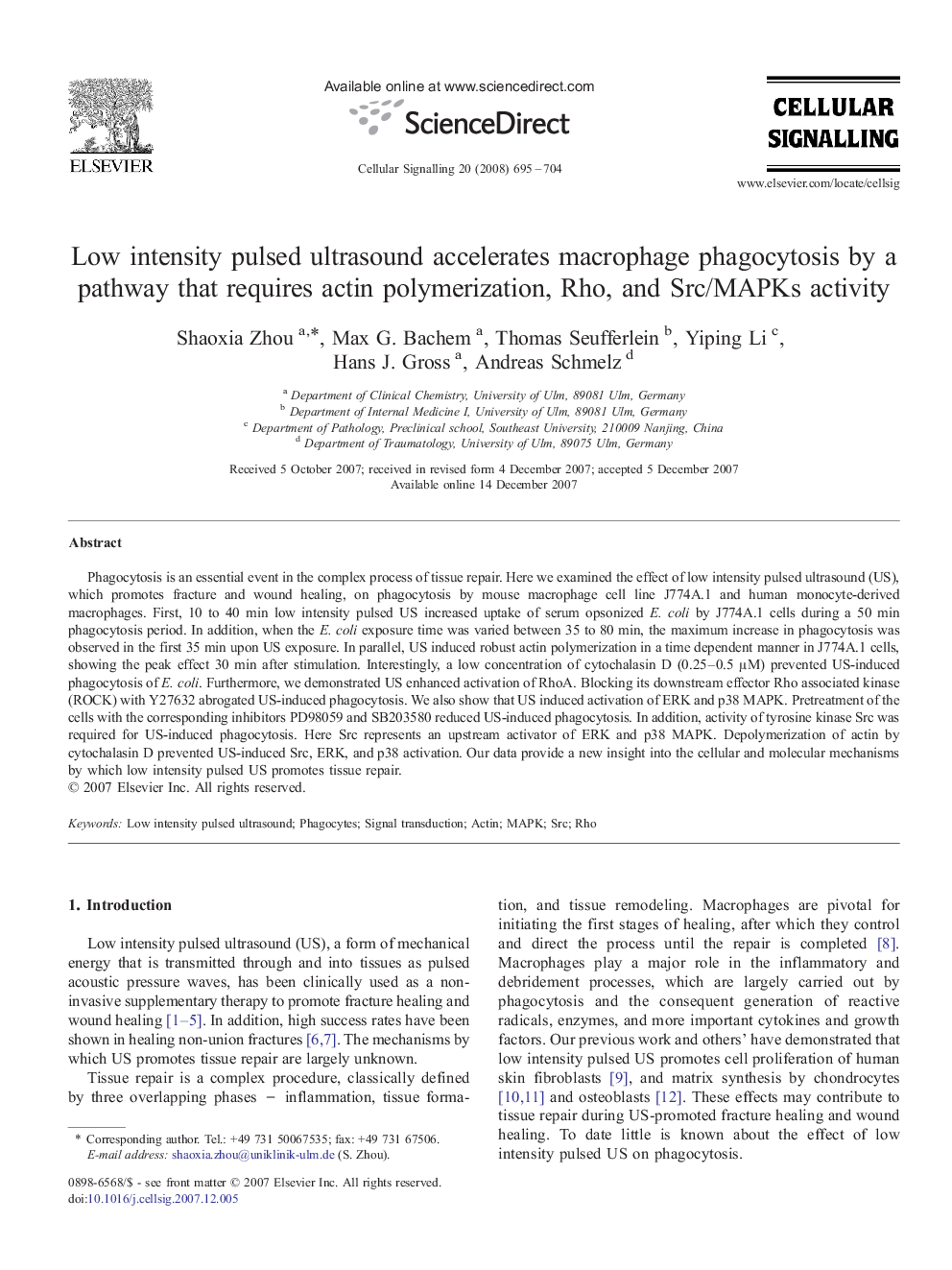| Article ID | Journal | Published Year | Pages | File Type |
|---|---|---|---|---|
| 1963966 | Cellular Signalling | 2008 | 10 Pages |
Abstract
Phagocytosis is an essential event in the complex process of tissue repair. Here we examined the effect of low intensity pulsed ultrasound (US), which promotes fracture and wound healing, on phagocytosis by mouse macrophage cell line J774A.1 and human monocyte-derived macrophages. First, 10 to 40 min low intensity pulsed US increased uptake of serum opsonized E. coli by J774A.1 cells during a 50 min phagocytosis period. In addition, when the E. coli exposure time was varied between 35 to 80 min, the maximum increase in phagocytosis was observed in the first 35 min upon US exposure. In parallel, US induced robust actin polymerization in a time dependent manner in J774A.1 cells, showing the peak effect 30 min after stimulation. Interestingly, a low concentration of cytochalasin D (0.25-0.5 μM) prevented US-induced phagocytosis of E. coli. Furthermore, we demonstrated US enhanced activation of RhoA. Blocking its downstream effector Rho associated kinase (ROCK) with Y27632 abrogated US-induced phagocytosis. We also show that US induced activation of ERK and p38 MAPK. Pretreatment of the cells with the corresponding inhibitors PD98059 and SB203580 reduced US-induced phagocytosis. In addition, activity of tyrosine kinase Src was required for US-induced phagocytosis. Here Src represents an upstream activator of ERK and p38 MAPK. Depolymerization of actin by cytochalasin D prevented US-induced Src, ERK, and p38 activation. Our data provide a new insight into the cellular and molecular mechanisms by which low intensity pulsed US promotes tissue repair.
Related Topics
Life Sciences
Biochemistry, Genetics and Molecular Biology
Biochemistry
Authors
Shaoxia Zhou, Max G. Bachem, Thomas Seufferlein, Yiping Li, Hans J. Gross, Andreas Schmelz,
